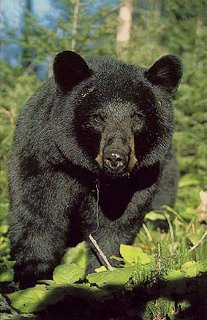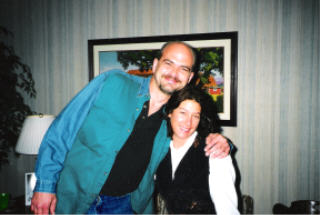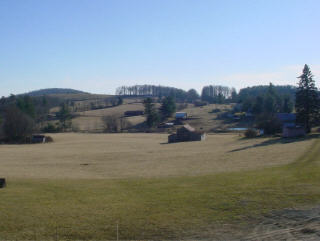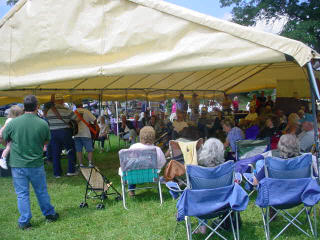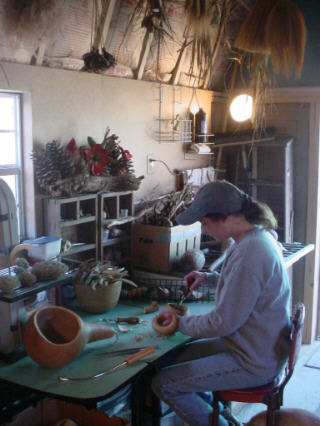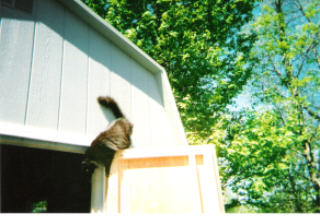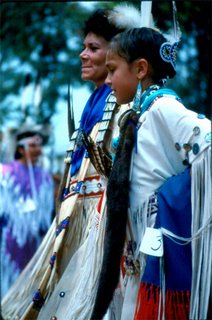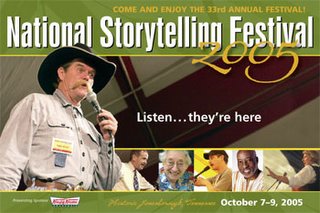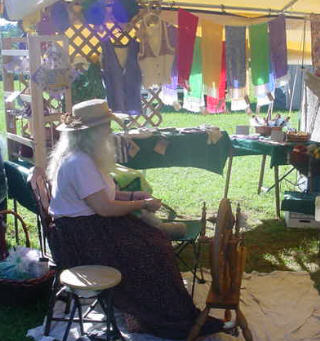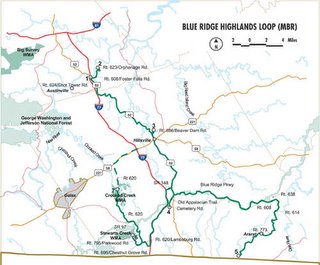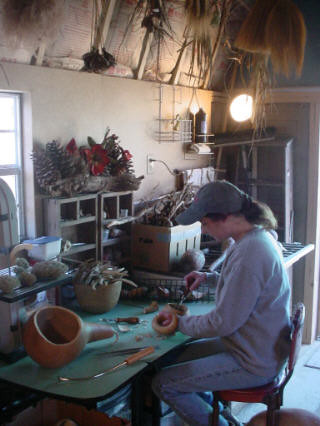
Farming as My Way of Life
The first half of the 20th century found people leaving the family farm in droves. This was due, in part, to the heavy physical labor required and the perception that life would be easier and more (financially) rewarding off the farm.
Ironically, the second half of that same century found people leaving their city jobs and returning to the farm for exactly the same reasons as their parents had left. People have found out for themselves, as well as finding out the hard way, that work accomplished with their own hands and heart is more rewarding than the work accomplished simply for a paycheck. That honest work contributes to an honorable way of life and when we are worthy stewards over God's gift of creation, we reap rewards and benefits only dreamt of in office cubicles.
The back to the land movement of the 1960's continues into the twenty-first century with the numbers of family, small, hobby and female farmers comprising the majority of new farmers. Women, especially, have become the new pioneers in the farming movement and sheep, goats, rabbits and other small livestock make up their new farms. In the Commonwealth of Virginia alone, women farmers number 19,500 and, as a population, are growing faster than the decline of the traditional male farmer. Yet, overall, in the USA farmers are fewer than 2% of the population.
We would do well to remember Maslow's Heirarchy of Needs...food, shelter and clothing are *needs*, everything else is a want.
My kith and kin first settled the Appalachian Mountains in the mid-1700's and became farmers and shepherds. Both sides of my family have always had a milk cow or two, chickens for both eggs and pot, hogs, sheep, beehives and gardens. In Les Hamrick's book,
Roots & Wings - The Family Record of Benjamin Hamrick, one of the cover photos is of my female relative, Jane Hamrick. She's in what might be her best dress, seated in her garden spinning a long draw at her Saxony spinning wheel. What's remarkable is her Saxony spinning wheel could be the twin of the Reeves Saxony wheel on which I spin while seated in my sunroom, overlooking the horses, sheep and cattle grazing the Appalachian mountain pastures.
My logo is a 1934 photo of my Daddy, Ellsworth James Bennett. He's kneeling on the ground with his arms encircling twin black lambs. Twin black lambs were a rarity because, at birth, they would usually be killed, stripped of their pelts and then sold to Miss Viola. She would turn those pelts into a French Mouton Fur Coat and then sell the coats to rich New York City women. Daddy was the baby boy and allowed to keep those twin lambs...at least for a time.
Appalachian Wool Works - Happy Sheep Make Beautiful Wool is my nod of the head to my kith and kin. Of course they would have eaten their sheep as well as used their fleeces and sold both to market but my darlings have no such worries. My sheep are fleece providers only and are well known for their fleece luxuriousness, length, strength and beauty. Like people, when sheep have low stress, the right food and nutrients and drink from crystal clear mountain rivers, they respond by giving their absolute best.
When a woman becomes a first time farmer, rancher or shepherd, she finds out she's, generally, considered to be an anomaly. She has to prove herself in the areas of livestock whereas with crops it's usually a different story. Crops are somehow equated to gardens and gardens to herb gardens and kitchens where, traditionally, women have reigned. Crops in the field and livestock have been a man's domain and he's sometimes a bit reluctant to relinquish his ground...no pun intended.
I've found younger men to be more accepting of me as a farmer and shepherd. Perhaps this is because they see me as a Grandmother figure and they want to lend a helping hand more? I don't know and it really doesn't matter just as long as they keep coming 'round to help out. One young man, James, is very protective and is always calling to ask, "what'cha need help with this week?" He's helped with my sheep by de-worming, feet trimming, shearing and is going to help with fencing and barn repair this spring. A young couple, Danny and Tammy, share both the work and the reward when it's time to cut, kick, bale and put up hay. Ken and Joey have also pitched in when I’ve been in desperate need.
Whoever is here at mealtime puts their feet under my table. It’s the way I was raised and I see no need to change. Millionaires and farm hands have sit down to a table groaning with food and, hopefully, the experience has made us all better. Perhaps that’s one reason why I’ve almost never been without help - people know they will eat and eat well thorough out the day.
The Internet has increased my market from locally (where I struggled to sell anything) to worldwide where I'm known for the quality of my fleeces and my rare breed American Curly horses. The horses number around 4,000 in the world and are known for being hypoallergenic and calm with exceptionally gentle dispositions and temperaments. People from Norway, Japan, Canada and all over the US have visited Thistle Cove Farm because they are interested in a horse that doesn't disturb their allergies.
The Internet has also allowed me to enlarge my personal world as well as my worldview and, I hope, has made me a better person. It has allowed me to sell fiber, goods and horses all over the world and has given me many friendships and has taken me to places I never dreamed of visiting. It’s helped many of my dreams come true.
Since I was six years old I've known I wanted to farm and that dream came true when we bought Thistle Cove Farm in the Appalachian Mountains of southwestern Virginia. It took more than four decades but God gave me the desire of my young heart. The lesson of tightly holding onto hope continues to serve me well as farmer and shepherd.






